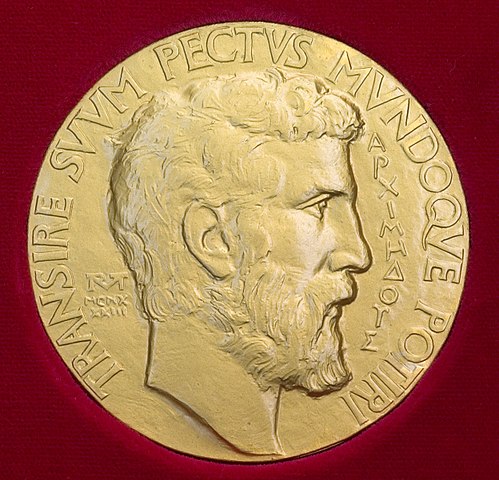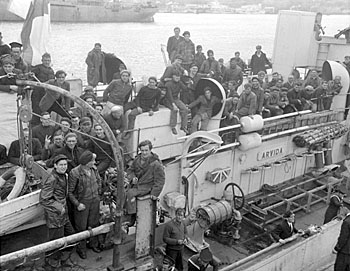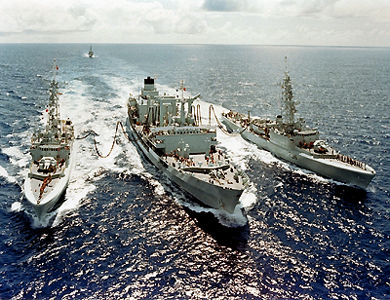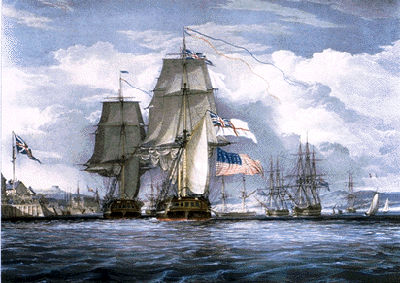Browse "Things"
-
Article
History of Mathematics in Canada
Every Canadian university has a mathematics department and offers one or more programs in this field. The same is probably true of almost every university throughout the world, a reflection of the importance of mathematics in contemporary society (see Mathematics and Society). Mathematics came to prominence as a scientific discipline after the Renaissance, during the period historians call the Scientific Revolution (1450-1700), when brilliant astronomer-mathematicians such as Copernicus and Newton discovered the true nature of the solar system, with the sun at the centre and the planets revolving around it. (See also Astronomy.) The role that mathematics played in these major discoveries gave the discipline the stature it has maintained to this day.
"https://d2ttikhf7xbzbs.cloudfront.net/fields_medal.jpg" // resources/views/front/categories/view.blade.php
https://d2ttikhf7xbzbs.cloudfront.net/fields_medal.jpg
-
Article
History of Medicine to 1950
The theory and practice of medicine in Canada changed significantly from the 16th to the 20th century, with important developments in medical education and regulation, understanding of anatomy and disease, public health and immunization, and pharmacology.
"https://d2ttikhf7xbzbs.cloudfront.net/media/media/c0fc3950-0db5-4f37-a1f2-903a52742928.jpg" // resources/views/front/categories/view.blade.php
https://d2ttikhf7xbzbs.cloudfront.net/media/media/c0fc3950-0db5-4f37-a1f2-903a52742928.jpg
-
Article
History of Palaeontology in Canada
Thanks to the progress that had been made in identifying and mapping the Palaeozoic rocks (570-245 million years old) of western New York and northern New England, Logan was able to establish the broad correlations of the formations in the St Lawrence region.
"https://d2ttikhf7xbzbs.cloudfront.net/media/media/5b4dc762-0119-4203-8731-cef6366d724f.jpg" // resources/views/front/categories/view.blade.php
https://d2ttikhf7xbzbs.cloudfront.net/media/media/5b4dc762-0119-4203-8731-cef6366d724f.jpg
-
Article
History of Physics in Canada
The history of physics in Canada involves the development of undergraduate and graduate studies and research in universities, research in government institutions and in private industry.
"https://d2ttikhf7xbzbs.cloudfront.net/media/media/352401f2-9e16-4265-9c53-189828385881.jpg" // resources/views/front/categories/view.blade.php
https://d2ttikhf7xbzbs.cloudfront.net/media/media/352401f2-9e16-4265-9c53-189828385881.jpg
-
Article
History of Powwows
While the exact origin of the powwow is unknown, these celebrations were adopted and adapted by various Indigenous communities across North America throughout the 20th century.
"https://d2ttikhf7xbzbs.cloudfront.net/media/media/f049f627-d2f7-4eaf-9c4f-db03980b55aa.jpg" // resources/views/front/categories/view.blade.php
https://d2ttikhf7xbzbs.cloudfront.net/media/media/f049f627-d2f7-4eaf-9c4f-db03980b55aa.jpg
-
Article
History of the Armed Forces in Canada
The armed forces are the land, naval and air forces commanded by the federal government for the purpose of defending Canada's security, protecting its citizens, and promoting its strategic interests at home or abroad. The armed forces have evolved since colonial times from small, local militia units to the modern professional military forces of today.
"https://d2ttikhf7xbzbs.cloudfront.net/media/media/27bfbefd-a613-47df-bd35-5e01ef6511ae.jpg" // resources/views/front/categories/view.blade.php
https://d2ttikhf7xbzbs.cloudfront.net/media/media/27bfbefd-a613-47df-bd35-5e01ef6511ae.jpg
-
Article
History of Veterinary Medicine
The healing of ANIMAL and human ailments has been a preoccupation of humans for centuries. Human MEDICINE became professionalized much before veterinary medicine, which did not become institutionalized until the opening of veterinary schools in France at Lyons (1761) and Alfort (1766).
"https://development.thecanadianencyclopedia.ca/images/tce_placeholder.jpg?v=e9dca980c9bdb3aa11e832e7ea94f5d9" // resources/views/front/categories/view.blade.php
https://development.thecanadianencyclopedia.ca/images/tce_placeholder.jpg?v=e9dca980c9bdb3aa11e832e7ea94f5d9
-
Article
History Since Confederation
The story of Canada since 1867 is, in many ways, a successful one: For a century and a half, people of different languages, cultures and backgrounds, thrown together in the vast, northern reaches of a continent, built a free society where regional communities could grow and prosper, linked by the common thread of an emerging national identity. There were false steps along the way, including the struggles of Indigenous people for survival, and the ever-present tensions over federal unity. But for the most part, Canada became an example to the world of a modern, workable nation state.
"https://d2ttikhf7xbzbs.cloudfront.net/media/media/f8f2bab3-d387-4165-9fbc-617c30019b95.jpg" // resources/views/front/categories/view.blade.php
https://d2ttikhf7xbzbs.cloudfront.net/media/media/f8f2bab3-d387-4165-9fbc-617c30019b95.jpg
-
Macleans
HIV Striking Straight Young Women
KAITLIN MORRISON LOST her virginity at 13 and, she says, "it was downhill from there." At 14, she left her parents' home in Port McNeill, B.C., on the northeast coast of Vancouver Island. She was a "party girl" and a "real rebel," she says, heavy into drugs (never needles, though).This article was originally published in Maclean's Magazine on May 30, 2005
"https://development.thecanadianencyclopedia.ca/images/tce_placeholder.jpg?v=e9dca980c9bdb3aa11e832e7ea94f5d9" // resources/views/front/categories/view.blade.php
https://development.thecanadianencyclopedia.ca/images/tce_placeholder.jpg?v=e9dca980c9bdb3aa11e832e7ea94f5d9
-
Article
HMCS Conestoga
HMCS Conestoga was a basic training establishment for the Women’s Royal Canadian Naval Service (WRCNS) during the Second World War. Located in Galt, Ontario, it operated from 1942 to 1945. Of nearly 6,800 women who served in the WRCNS, most trained at Conestoga.
"https://d2ttikhf7xbzbs.cloudfront.net/media/new_article_images/IsabelMacneill/WRCNS at Conestoga.jpg" // resources/views/front/categories/view.blade.php
https://d2ttikhf7xbzbs.cloudfront.net/media/new_article_images/IsabelMacneill/WRCNS at Conestoga.jpg
-
Article
HMCS Kootenay Disaster
HMCS Kootenay was a destroyer in the Canadian Navy. In 1969, an accident at sea killed 9 sailors and injured 53 others. It was the worst peacetime disaster in the history of the navy.
"https://d2ttikhf7xbzbs.cloudfront.net/media/media/ced5f338-fcf3-463a-9627-1da6d7794b5e.jpg" // resources/views/front/categories/view.blade.php
https://d2ttikhf7xbzbs.cloudfront.net/media/media/ced5f338-fcf3-463a-9627-1da6d7794b5e.jpg
-
Article
HMCS Niobe
His Majesty’s Canadian Ship (HMCS) Niobe was a 11,000-ton Diadem-class heavy protected cruiser, which was originally commissioned into Britain’s Royal Navy. In 1910, Britain sold the vessel to Canada, where it became one of the first two warships of the new Royal Canadian Navy. Niobe saw a few years’ service, including briefly during the First World War. In 1915, due to the ship’s deteriorating condition, it was tied up in Halifax’s naval dockyard and used as a depot ship.
"https://d2ttikhf7xbzbs.cloudfront.net/HMCSNiobe/HMCS Niobe entering Halifax on Trafalgar Day 1910.jpg" // resources/views/front/categories/view.blade.php
https://d2ttikhf7xbzbs.cloudfront.net/HMCSNiobe/HMCS Niobe entering Halifax on Trafalgar Day 1910.jpg
-
Article
HMCS Sackville
HMCS Sackville is the last surviving corvette used by the Royal Canadian Navy in the Second World War. The warship was one of 123 Canadian corvettes that escorted supply convoys crossing the North Atlantic during the Battle of the Atlantic, the longest running battle of the war. In 1985, HMCS Sackville was designated Canada’s Naval Memorial.
"https://d2ttikhf7xbzbs.cloudfront.net/media/media/6ac77be5-a78f-4d5f-9eb2-e35fe40b148e.jpg" // resources/views/front/categories/view.blade.php
https://d2ttikhf7xbzbs.cloudfront.net/media/media/6ac77be5-a78f-4d5f-9eb2-e35fe40b148e.jpg
-
Article
HMS Shannon
HMS Shannon was a fully-rigged, 38-gun Leda-class frigate, one of the largest frigates built for the Napoleonic Wars. It had two decks, with the main armaments on the upper deck, and could take on a complement of 330 men.
"https://d2ttikhf7xbzbs.cloudfront.net/media/media/f5005028-c1cf-45af-89ab-badff7bc77bd.jpg" // resources/views/front/categories/view.blade.php
https://d2ttikhf7xbzbs.cloudfront.net/media/media/f5005028-c1cf-45af-89ab-badff7bc77bd.jpg
-
Article
HMS Shannon versus USS Chesapeake, War of 1812
HMS Shannon and the USS Chesapeake fought one of the most celebrated naval battles of the WAR OF 1812. On 1 June 1813, the two ships met 20 nautical miles (37 km) east of Boston lighthouse, between Cape Ann and Cape Cod.
"https://development.thecanadianencyclopedia.ca/images/tce_placeholder.jpg?v=e9dca980c9bdb3aa11e832e7ea94f5d9" // resources/views/front/categories/view.blade.php
https://development.thecanadianencyclopedia.ca/images/tce_placeholder.jpg?v=e9dca980c9bdb3aa11e832e7ea94f5d9
